Input interpretation

perchloryl fluoride
Chemical names and formulas

formula | ClFO_3 name | perchloryl fluoride alternate names | chlorine fluoride oxide | chlorine oxyfluoride mass fractions | Cl (chlorine) 34.6% | F (fluorine) 18.5% | O (oxygen) 46.9%
Lewis structure
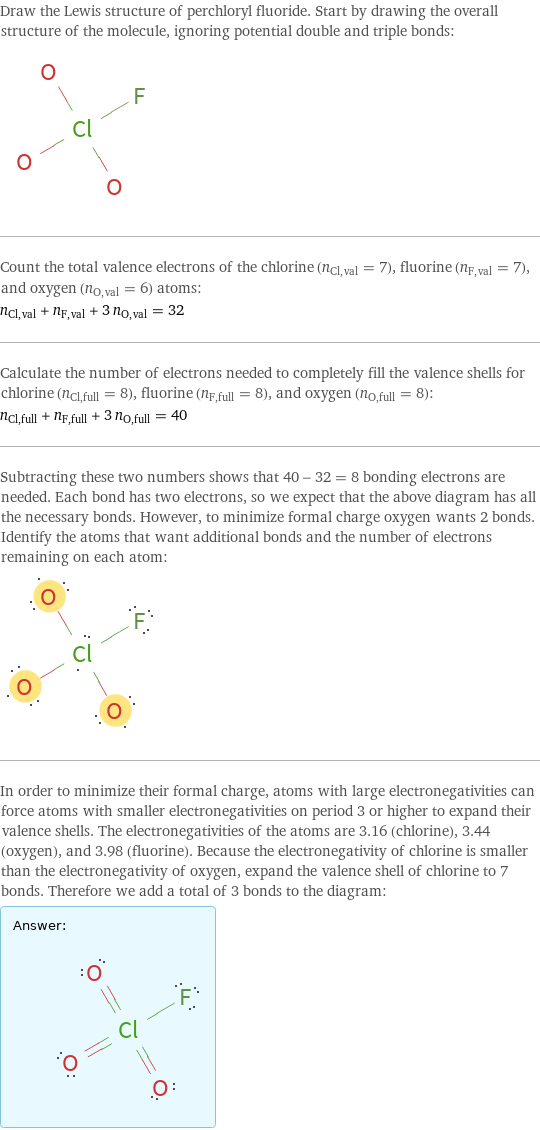
Draw the Lewis structure of perchloryl fluoride. Start by drawing the overall structure of the molecule, ignoring potential double and triple bonds: Count the total valence electrons of the chlorine (n_Cl, val = 7), fluorine (n_F, val = 7), and oxygen (n_O, val = 6) atoms: n_Cl, val + n_F, val + 3 n_O, val = 32 Calculate the number of electrons needed to completely fill the valence shells for chlorine (n_Cl, full = 8), fluorine (n_F, full = 8), and oxygen (n_O, full = 8): n_Cl, full + n_F, full + 3 n_O, full = 40 Subtracting these two numbers shows that 40 - 32 = 8 bonding electrons are needed. Each bond has two electrons, so we expect that the above diagram has all the necessary bonds. However, to minimize formal charge oxygen wants 2 bonds. Identify the atoms that want additional bonds and the number of electrons remaining on each atom: In order to minimize their formal charge, atoms with large electronegativities can force atoms with smaller electronegativities on period 3 or higher to expand their valence shells. The electronegativities of the atoms are 3.16 (chlorine), 3.44 (oxygen), and 3.98 (fluorine). Because the electronegativity of chlorine is smaller than the electronegativity of oxygen, expand the valence shell of chlorine to 7 bonds. Therefore we add a total of 3 bonds to the diagram: Answer: | |
Basic properties
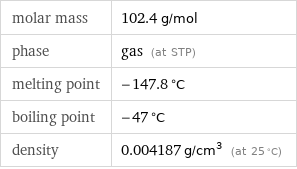
molar mass | 102.4 g/mol phase | gas (at STP) melting point | -147.8 °C boiling point | -47 °C density | 0.004187 g/cm^3 (at 25 °C)
Units

Gas properties (at STP)
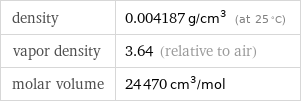
density | 0.004187 g/cm^3 (at 25 °C) vapor density | 3.64 (relative to air) molar volume | 24470 cm^3/mol
Units

Thermodynamic properties
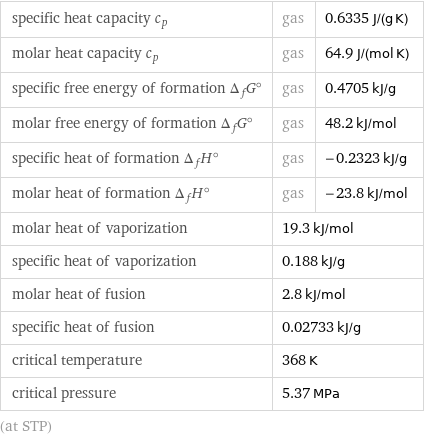
specific heat capacity c_p | gas | 0.6335 J/(g K) molar heat capacity c_p | gas | 64.9 J/(mol K) specific free energy of formation Δ_fG° | gas | 0.4705 kJ/g molar free energy of formation Δ_fG° | gas | 48.2 kJ/mol specific heat of formation Δ_fH° | gas | -0.2323 kJ/g molar heat of formation Δ_fH° | gas | -23.8 kJ/mol molar heat of vaporization | 19.3 kJ/mol | specific heat of vaporization | 0.188 kJ/g | molar heat of fusion | 2.8 kJ/mol | specific heat of fusion | 0.02733 kJ/g | critical temperature | 368 K | critical pressure | 5.37 MPa | (at STP)
Chemical identifiers
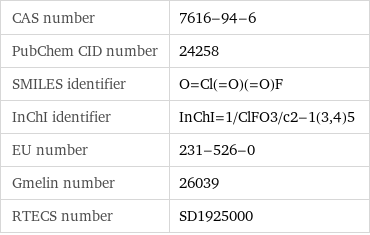
CAS number | 7616-94-6 PubChem CID number | 24258 SMILES identifier | O=Cl(=O)(=O)F InChI identifier | InChI=1/ClFO3/c2-1(3, 4)5 EU number | 231-526-0 Gmelin number | 26039 RTECS number | SD1925000
NFPA label

NFPA label
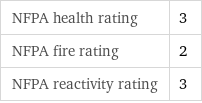
NFPA health rating | 3 NFPA fire rating | 2 NFPA reactivity rating | 3
Toxicity properties

RTECS classes | other